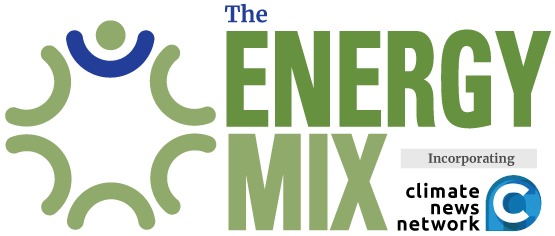Canadian Wildfire Smoke Shrouds Parts of American Midwest, Reaches Europe
Smoke from Canadian wildfires—that have forced more than 27,000 Canadians in three provinces to flee their homes—carried another day of poor air quality south of the border to the Midwest, where conditions in parts of Minnesota, Wisconsin and Michigan were rated “very unhealthy” on Tuesday.
The smoke has even reached Europe, reported The Associated Press.
People in the northern and heavily populated southern areas of Manitoba and Saskatchewan are feeling it the worst, as that’s where a majority of Canada’s wildfires are burning, Natalie Hasell of Environment Canada, told The Canadian Press.
“Right in the vicinity of the fires, the air quality is going to be particularly bad,” Hasell said Wednesday.
“It’s really important for people to … pay attention to how you’re feeling and how other people around you are feeling.”
Hasell said wildfires in Ontario and Quebec may also be the cause of smoky air in Michigan and the U.S. east coast but not to the same extent as the blazes roaring through parts of the Prairies.
Environment Canada issued bulletins warning of poor air quality in parts of northern Manitoba and Saskatchewan. The agency said conditions will fluctuate, but those 65 and older along with children and pregnant women are particularly susceptible to the pollution. Symptoms could range from eye irritation to chest pains and severe coughing.
The smell of smoke hung over the Minneapolis-St. Paul area on Tuesday morning despite rain that obscured the full measure of the dirty air, AP wrote. Minnesota’s pollution control agency issued an alert for almost the entire state into Wednesday. Smoky conditions that have reached the U.S. periodically in recent weeks extended as far east as Michigan, west into the Dakotas and Nebraska, and as far to the southeast as Georgia.
Conditions at Ground Level Are Unhealthy
Earlier this week, the U.S. Environmental Protection Agency’s AirNow map showed a swath of red for “unhealthy” conditions across the eastern half Minnesota into western Wisconsin and northern Iowa. The map also showed purple for “very unhealthy” across much of the Minneapolis-St. Paul metropolitan area, where the Air Quality Index numbers of 250 and were common, though conditions started to improve slightly by late morning.
The Air Quality Index—AQI—measures how clean or polluted the air is, focusing on health effects that might be experienced within a few hours or days after breathing polluted air. It is based on ground-level ozone, particle pollution, carbon monoxide, sulfur dioxide, and nitrogen dioxide. Particulates are the main issue from the fires. The index ranges from green, where the air quality is satisfactory, to maroon, which is considered hazardous. That level comes with health warnings of emergency conditions, according to AirNow.
There were a few scattered locations in the Twin Cities area that temporarily hit maroon on Tuesday morning. But by midday Tuesday, most of the remaining maroon spots in the region were on the Upper Peninsula of Michigan.
Hospitals Seeing More Patients With Respiratory Symptoms
Hennepin Healthcare, the main emergency hospital in Minneapolis, has seen a slight increase in visits by patients with respiratory symptoms aggravated by the dirty air.
Dr. Rachel Strykowski, a pulmonologist, said there is usually a bit of a delay before patients come in, which is unfortunate because the sooner those patients contact their doctors, the better the outcome. Typical symptoms, she said, include “increase in shortness of breath, wheezing, maybe coughing a bit more, and flares of their underlying disease, and that’s usually COPD and asthma.”
The fine particulate matter from the wildfire smoke triggers more inflammation in patients’ airways, aggravating their underlying medical conditions, Strykowski said. This is usually a time those patients can go outside and enjoy the summer weather because there are fewer triggers, so the current ones forcing them to stay inside can feel “quite isolating.”
People can protect themselves by staying indoors or by wearing N95 masks, Strykowski said. The cloth masks many people used during the COVID-19 pandemic don’t provide enough filtration.
Another Bad Fire Season
Canada is having another bad wildfire season, and more than 27,000 people in three provinces have been forced to evacuate. Most of the smoke reaching the American Midwest has been coming from fires northwest of the provincial capital of Winnipeg in Manitoba.
The Canadian Press reported that Winnipeg hotels were opening up Monday to evacuees. More than 17,000 Manitoba residents have been displaced since last week, including 5,000 residents of the community of Flin Flon, nearly 645 kilometers northwest of Winnipeg. In neighboring Saskatchewan, 2,500 residents of the town of La Ronge were ordered to flee Monday, on top of more than 8,000 in the province who had been evacuated earlier.
In Saskatoon, where the premiers of Canada’s provinces and the country’s prime minister met Monday, Saskatchewan Premier Scott Moe said all of Canada has come together to help the Prairie provinces, The Canadian Press reported.
Two people were killed by a wildfire in mid-May in Lac du Bonnet, northeast of Winnipeg.
Canada’s worst-ever wildfire season was in 2023. It choked much of North America with dangerous smoke for months.
Smoke Reaches Europe
Canada’s wildfires are so large and intense that the smoke is even reaching Europe, where it is causing hazy skies but isn’t expected to affect surface-air quality, according the European climate service Copernicus.
The first high-altitude plume reached Greece and the eastern Mediterranean just over two weeks ago, with a much larger plume crossing the Atlantic within the past week and more expected in coming days, according to Copernicus.
“That’s really an indicator of how intense these fires are, that they can deliver smoke,” high enough that they can be carried so far on jet streams, said Mark Parrington, senior scientist at the service.
The fires also are putting out significant levels of carbon pollution—an estimated 56 megatonnes through Monday, second only to 2023, according to Copernicus.
Cover photo: Manitoba RCMP assisted with the evacuation of northern communities. (RCMP)


